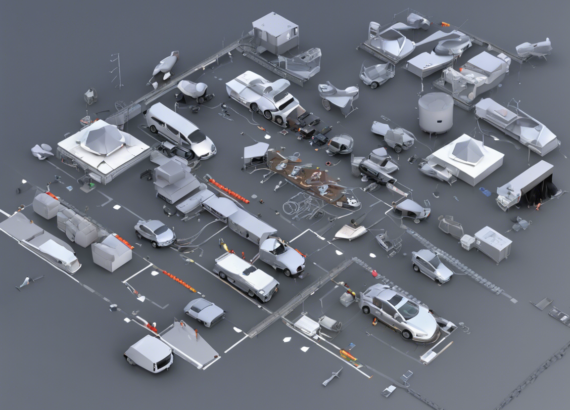As the world continues to search for innovative and sustainable solutions to various challenges, the field of medicine has also been evolving. One of the most exciting advancements in modern healthcare is the integration of solar therapeutics. Solar therapeutics refers to the use of solar energy in the diagnosis, treatment, and prevention of diseases. This emerging field is gaining traction due to its numerous benefits, ranging from cost-effectiveness to environmental sustainability. In this comprehensive article, we will explore the various applications of solar therapeutics in modern medicine and delve into the advantages it offers.
Understanding Solar Therapeutics in Modern Medicine
What is Solar Therapeutics?
Solar therapeutics involves harnessing the power of the sun to improve healthcare practices. This can include using solar energy for diagnostic imaging, powering medical devices, conducting research, and even developing new solar-based treatments.
Applications of Solar Therapeutics in Medicine
1. Solar-Powered Medical Devices
One of the key applications of solar therapeutics is in the development of solar-powered medical devices. These devices can range from portable solar-powered diagnostic equipment to implantable devices that are charged by solar energy. This technology enables healthcare providers to operate in remote or resource-limited areas where access to electricity may be scarce.
2. Solar-Powered Diagnostics
Solar energy can also be used to power diagnostic tools such as X-ray machines, ultrasound devices, and laboratory equipment. By using solar power, healthcare facilities can reduce their reliance on grid electricity, leading to cost savings and improved sustainability.
3. Solar-Based Treatments
Researchers are also exploring the use of solar energy for developing new solar-based treatments. For example, photodynamic therapy utilizes light-sensitive compounds activated by specific wavelengths of light, including sunlight, to treat various conditions such as cancer and skin disorders.
Advantages of Solar Therapeutics in Modern Medicine
1. Cost-Effectiveness
By harnessing solar energy, healthcare facilities can reduce their operating costs associated with electricity bills. This is particularly beneficial for clinics in remote areas that may not have access to reliable electricity grids.
2. Environmental Sustainability
Solar therapeutics promote environmental sustainability by reducing reliance on fossil fuels and lowering carbon emissions. This aligns with the global effort to combat climate change and create a greener future for healthcare.
3. Increased Access to Healthcare
In regions with limited access to electricity, solar therapeutics can help bridge the healthcare gap by providing medical services that would otherwise be unavailable. This can lead to improved healthcare outcomes and better quality of life for underserved populations.
4. Reliability
Solar energy is a reliable power source, especially in sunny regions where sunlight is abundant. This reliability ensures that medical facilities can operate consistently without disruptions due to power outages.
Challenges and Considerations
While solar therapeutics offers numerous benefits, there are also challenges to consider. Some of the key challenges include the initial cost of implementing solar technology, the need for adequate sunlight exposure, and ensuring the maintenance and longevity of solar-powered devices. Addressing these challenges will be crucial in realizing the full potential of solar therapeutics in modern medicine.
FAQs About Solar Therapeutics in Medicine
1. Can solar energy be used for surgery?
Yes, solar energy can be utilized for surgical procedures through the development of solar-powered surgical tools and equipment. These tools can be powered by solar energy, enabling surgeries to be conducted in areas with limited access to electricity.
2. How is solar energy used for diagnostic imaging?
Solar energy can power diagnostic imaging tools such as X-ray machines, ultrasound devices, and MRI scanners. By harnessing solar power, healthcare facilities can conduct essential diagnostic procedures without relying solely on grid electricity.
3. What is photodynamic therapy, and how does it relate to solar therapeutics?
Photodynamic therapy is a treatment that uses light-sensitive compounds to target and destroy abnormal cells, such as cancer cells. This therapy can be activated by specific wavelengths of light, including sunlight, making it a potential application of solar therapeutics.
4. Are there any limitations to using solar energy in healthcare?
One limitation of using solar energy in healthcare is the variability of sunlight exposure, which can impact the reliability of solar-powered devices. Additionally, the initial costs of implementing solar technology may be a barrier for some healthcare facilities.
5. How does solar therapeutics contribute to sustainable healthcare practices?
Solar therapeutics promotes sustainable healthcare practices by reducing reliance on fossil fuels, lowering carbon emissions, and increasing access to healthcare in remote or off-grid areas. By harnessing solar energy, healthcare facilities can operate more sustainably and efficiently.
In conclusion, solar therapeutics represents a promising frontier in modern medicine, offering a wide array of benefits that can transform healthcare practices globally. By harnessing the power of the sun, healthcare providers can improve patient care, enhance sustainability, and increase access to medical services in underserved communities. Despite the challenges that come with adopting solar technology, the potential long-term advantages make it a worthwhile investment for the future of healthcare. As research and innovation in solar therapeutics continue to advance, the possibilities for its applications in medicine are limitless.







